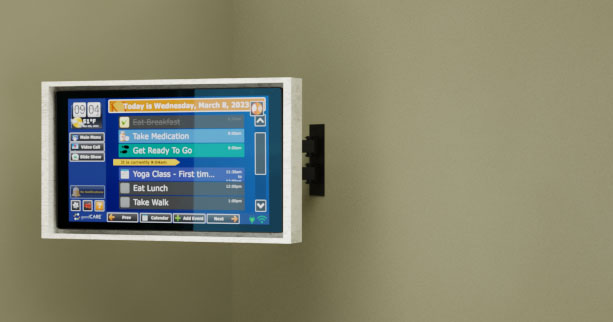Recap of Connected Health Symposium by Donna Cusano
http://www.telecareaware.com/index.php/connected-health-symposium-thu22-2009.html
Thurs 22 October: Afternoon and Final
The final full breakout I attended was also with Laurie Orlov (aka Agent 99) here very firmly in her space – Get (Your House) Smart: Aging in Place, at Home, Aided by Technology. Joined by Charles Hillman of GrandCare Systems, Joe Coughlin, PhD of MIT AgeLab, Tom Ryden of North End Technologies and moderated by Marc Holland of System Research Services, this panel had much to say in their 50 minutes and could have easily filled an additional engaging 15.
This area is where much real-world tech is happening, but adoption has a long way to go.
The ‘smart house’ for Dr. Coughlin is the nexus of innovation, hardware, software and health information. It is not about devices but lifestyle and services, not about making up for health ‘loss’ but ‘gain’. The current business model is now oriented to what Medicare will reimburse (not much) and nothing is right in terms of the technology. Right now it is all about a home for those who are obviously old and frail – the paradox is that if you design a home for them, no one will buy it, including the old and frail.
Mr. Hillman approached the smart house as (Gregory) House – we’ve become masters of acute care, but not very good at assisting independent living and aging ‘responsibly’. Systems should be designed holistically and include 1) physiologic sensing (vital signs), 2) activity monitoring, 3) social connectedness and 4) home controls that light rooms at night, turn on outside lights, etc. The service he developed, GrandCare, has incorporated all four.
The smart home in Ms. Orlov’s view uses technology to more tightly connect the senior to others and to be safe, through communications and engagement, home safety and security, health and wellness and continuous learning and participation in social networks. Older people ARE interested in technology – broadband is being adopted by them in increasing numbers. But it has to be acceptable to the senior and can’t be imposed by family.
Mr. Ryden added robotics to the smart home, especially the development of small robots that can aid in everyday activities (versus the Japanese model of robopets for socialization).
Mr. Hillman pointed out that ADL (activities of daily living) monitoring is growing; currently it is largely a private pay service as LTC insurance and Medicare do not pay for it at present. LTC insurance should be paying for monitoring and other smart home assistive services, as they do for home care.
Homes, especially in this tired market, need something extra to sell and older homes need to upgrade; as Mr. Ryden put it, the ideal for technology would be ‘available at Best Buy’ and reimbursable. But the potential disrupters – home builders and remodelers–seem to avoid the older market except for ‘senior communities.’ Ms. Orlov described attempting to work with builders in her state, Florida, to create a ‘smart home’ demo incorporating universal design and technology in one of those plentiful unsold homes, and amazingly has not succeeded as of yet. (Keep trying, Laurie!)
NORCs – naturally occurring retirement communities – often need upgrading. And alternatives such as ‘intentional communities’ must be explored for the rising single population, especially those in the suburbs and exurbs. If they would realize it, the real disrupters and the new model may be via home builders, retailers and (Dr. Coughlin) utility companies. (In the US utilities are increasing selling ‘value added’ in products and services.)
Current technology is NOT fun, interactive or particularly desired to consumers. If it were, it could be a lot more appealing and useful. So where are the game designers? In fact, as Ms. Orlov pointed out, the terminology – aging – is terrifying; large companies are avoiding it in their messaging and we don’t have good terminology to replace it. Her final note: ‘patients’ are really people, and we should be referring to them that way.
A tip of the hat to Laurie Orlov’s Aging In Place Technology blog and her POV on the Symposium



